"Meeting on the Cush." Russia was on the verge of war with Britain
In 1870's - 1880's. The Russian Empire very actively declared itself in Central Asia, which extremely worried the British, who felt a threat to their own dominance in India and influence in the regions adjacent to India, first of all in Afghanistan and the mountain principalities. The geopolitical confrontation between Great Britain and the Russian Empire in the second half of the XIX century was called the “Big Game”. Despite the fact that before the full-scale war between Britain and Russia, after the end of the Crimean campaign, it never came, the two powers literally balanced on the verge of open confrontation. Britain feared that the Russian Empire would gain access to the Indian Ocean through Persia and Afghanistan, which would undermine the rule of the British crown in India. The Russian Empire, in turn, explained the strengthening of its military-political presence in Central Asia with the need to protect its own territory from the raids of its belligerent southern neighbors. Central Asia in the XVIII-XIX centuries It was the subject of the geopolitical interests of the three large countries - Great Britain, which owned neighboring India, which included the territory of modern Pakistan, the Qing Empire, which controlled East Turkestan (modern Xinjiang Uygur Autonomous Region of China) and Russia. But if Qing China was the weakest link among the listed powers, then Russia and Britain came together in a serious confrontation. For the Russian Empire, the Central Asian territories were of greater importance than for the British, since the lands of Central Asia inhabited by the Turkic and Iranian peoples rested on the southern borders of the empire. If Britain was at a colossal distance from India and Afghanistan, then Russia directly bordered the Muslim East and could not but show an interest in strengthening its own positions in the region. In 1878, by order of Emperor Alexander II, a twenty-thousand-strong army was concentrated in Turkestan under the control of the Russian Empire, which, if the political situation in the region deteriorated further, was set to move south to Afghanistan.
Anglo-Afghan Wars
From the beginning of the 19th century, the Russian Empire tried to consolidate its influence in Afghanistan, which caused extreme irritation of the British government. In the first half of the XIX century, the political situation in Afghanistan remained unstable. The mighty empire of Durrani, created in 1747, by this time actually collapsed, because, as often happened in the East, and not only in the East, various branches of the ruling dynasty — Sadozai and Barakzai — clashed.
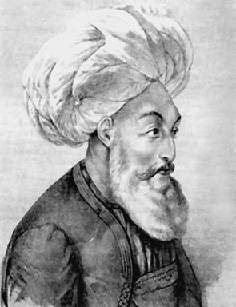 By the beginning of the 1830's. the representative of the Barakzayev branch Dost Mohammed began to take the upper hand in the internecine struggle. He was in power in Kabul, controlled Ghazni and gradually took over the whole of Afghanistan. The main opponent of Dost-Mohammed and the leader of the Sadozayev clan, Shuja-Shah Durrani, by this time emigrated to British India and in fact maintained his court only with British aid. His nephew Kamran kept control of the Herat khanate, but was unable to withstand the growing influence of Dost Mohammed. Meanwhile, weakened by the constant feudal strife, Afghanistan was becoming an increasingly tidbit for its neighbors — Persia and the Sikh state. Sikhs sought to subjugate Peshawar to their influence, and the Persians saw their goal in mastering the Herat khanate. In 1833, Mr .. Shuja-Shah Durrani, supported by the British, entered into an alliance with the Sikhs and invaded Sindh territory. Naturally, his main goal was not Sind, but Kabul, which he did not hide from his opponents. Dost Mohammed, finding that his ability to oppose the combined forces of Shuja Shah and the Sikhs would not be enough, in 1834, he sent an embassy to the Russian Empire. Only in 1836, the Ambassador of the Afghan Emir Hussein Ali Khan was able to get to Orenburg, where he met with the governor V.A. Perovsky. So began story Russian-Afghan relations in the XIX century. In 1837, as a result of negotiations with Hussein Ali Khan, the embassy of Lieutenant I.V. Vitkevich. The very fact of the development of bilateral relations between the Russian Empire and Afghanistan frightened London to such an extent that Great Britain decided to act by military means — to overthrow Dost-Mohammed and implant the anti-Russian monarch on the Kabul throne.
By the beginning of the 1830's. the representative of the Barakzayev branch Dost Mohammed began to take the upper hand in the internecine struggle. He was in power in Kabul, controlled Ghazni and gradually took over the whole of Afghanistan. The main opponent of Dost-Mohammed and the leader of the Sadozayev clan, Shuja-Shah Durrani, by this time emigrated to British India and in fact maintained his court only with British aid. His nephew Kamran kept control of the Herat khanate, but was unable to withstand the growing influence of Dost Mohammed. Meanwhile, weakened by the constant feudal strife, Afghanistan was becoming an increasingly tidbit for its neighbors — Persia and the Sikh state. Sikhs sought to subjugate Peshawar to their influence, and the Persians saw their goal in mastering the Herat khanate. In 1833, Mr .. Shuja-Shah Durrani, supported by the British, entered into an alliance with the Sikhs and invaded Sindh territory. Naturally, his main goal was not Sind, but Kabul, which he did not hide from his opponents. Dost Mohammed, finding that his ability to oppose the combined forces of Shuja Shah and the Sikhs would not be enough, in 1834, he sent an embassy to the Russian Empire. Only in 1836, the Ambassador of the Afghan Emir Hussein Ali Khan was able to get to Orenburg, where he met with the governor V.A. Perovsky. So began story Russian-Afghan relations in the XIX century. In 1837, as a result of negotiations with Hussein Ali Khan, the embassy of Lieutenant I.V. Vitkevich. The very fact of the development of bilateral relations between the Russian Empire and Afghanistan frightened London to such an extent that Great Britain decided to act by military means — to overthrow Dost-Mohammed and implant the anti-Russian monarch on the Kabul throne. October 1 1838 Governor-General of India George Eden declared war on Afghanistan. Thus began the first Anglo-Afghan war, which lasted from 1838 to 1842. The British command was planning to seize Afghanistan by the forces of the Bombay and Bengal armies, as well as Sikh troops and formations under the command of the son of Shuja-Shah Teymur-Mirza. The total number of expeditionary forces of the British was 21 thousand troops, of which 9,5 thousands accounted for the Bengal army. The command of the expeditionary forces, called the Indian Army, was assigned to General John Kean.
The armed forces possessed by the Emir Dost-Muhammad were much inferior to the British and their satellites in terms of armaments, skills, and even numbers. At the disposal of the Kabul emir was a squadron of 2,5 infantry with thousands of soldiers, artillery with 45 guns and 12-13 thousands of cavalrymen. However, climatic conditions were also being played against the British - the expeditionary forces had to move through the endless deserts of Baluchistan, where they fell to 20 thousand heads of cattle, and the courage of the Afghans. Although Kandahar surrendered without a fight, the defenders of Ghazni under the command of the son of Dost-Muhammad Haider-khan fought to the last. However, in the first stage of the confrontation, the British and their satellites managed to “squeeze” Dost Mohammed from Kabul. 7 August 1839, troops loyal to Shuja-Shah Durrani entered Kabul. The British began to withdraw the main military units from the territory of Afghanistan, and by the end of 1839, the 13-thousandth army of Shuja-Shah, the 7-thousandth Anglo-Indian contingent and the 5-thousandth Sikh formation remained in Afghanistan. The main part of the British troops was stationed in the Kabul area. Meanwhile, uprisings against the British presence began, in which Pashtun, Hazara, and Uzbek tribes took part in different parts of Afghanistan. They did not stop even when the British managed to capture the emir Dost Mohammed. More precisely, the emir, whose troops were very successfully operating in the province of Kugistan and even defeated the Anglo-Indian troops, suddenly arrived in Kabul and surrendered to the British authorities. Dost Mohammed was sent to permanent residence in British India. The solution of the problem with Dost Mohammed, oddly enough, played against Shuja Shah, proclaimed by the emir of Afghanistan. Considering Afghanistan under the control of the territory, the British authorities began to allocate smaller sums of money for the maintenance of the Kabul court, its army and the support of the leaders of the Afghan tribes. Ultimately, the latter increasingly began to rebel and even rebel against the Emir of Kabul. On top of that, the dominance of the British in the political life of the country caused a negative reaction from the Afghan nobility, clergy and common people. In September, 1841 in the country began powerful anti-British performances. In Kabul itself, the British mission was cut. Amazingly, the six-thousand British military contingent standing near Kabul could not resist the popular uprising. The rebels proclaimed Mohammed Zeman-khan, the new emir of Afghanistan, the Dost-Mohammed's nephew, who until the accession of Shuja-Shah, was at the head of Jalalabad. There was a riot of the Afghan soldiers of the Kugistan regiment, who killed their British officers. The Gurkha regiment was exterminated; in Cheyndabad, Afghans destroyed the detachment of Captain Woodborn.
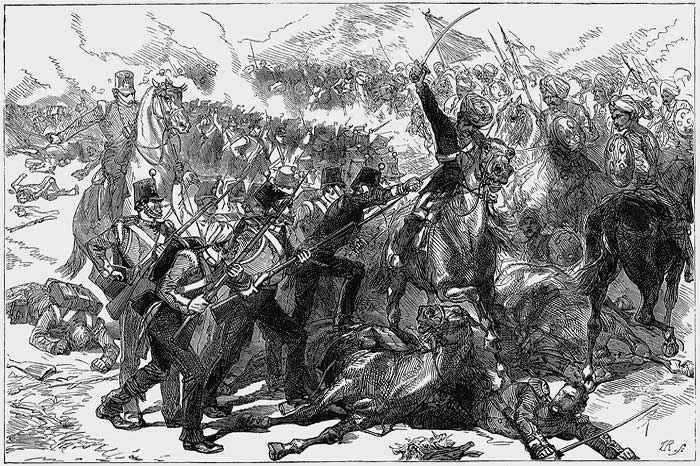
In January, 1842, commanding British troops in Kabul, General Elphinstone signed an agreement with 18 Afghan tribal leaders and sardars, according to which the British surrendered all money to Afghans, all artillery except 9 guns, a large number of firearms and cold weapons. On January 6, 16 of thousands of Englishmen advanced from Kabul, including 4,5 thousands of military personnel, as well as women, children, servants. On the way from Kabul, the British column was attacked by Afghans and was destroyed. Managed to survive the only Englishman - Dr. Blyden. The rest of the British formations that remained in Afghanistan were withdrawn from the country’s territory by December 1842. The emir Dost Mohammed returned to the country, freed from British captivity. Thus, the actual defeat of Britain ended the First Anglo-Afghan War, as a result of which the people of Central Asia and North India were able to thoroughly doubt the fighting capacity and power of the British Empire. Back in the summer of 1842, British scouts led by Captain Arthur Conolly, who had arrived in Bukhara shortly before his death, were killed in Bukhara by order of the emir of Nasrullah in order to conduct anti-Russian propaganda at the emir's court. Thus, by the middle of the XIX century, the position of Britain in Central Asia was significantly shaken. However, the growing influence of Russia in Central Asia and Afghanistan continued to worry the British leadership. After in 1858 the uprising of sepois in India was crushed, the latter finally came under the control of Great Britain, and the Queen of Great Britain took the title of Empress of India.
In the summer of 1878, the emperor Alexander II ordered the preparation of an invasion of Afghanistan by the forces of a twenty-thousand Russian army concentrated in Turkestan. The military-diplomatic mission of General Nikolai Stoletov was sent to Kabul, whose mission was to conclude a treaty with the Afghan emir Shir-Ali. In addition, the Russian Empire seriously considered the possibility of an invasion of the northwestern Indian mountain states located in the territory of the modern province of Jammu and Kashmir. As the Afghan emir tended to cooperate with the Russian Empire to a greater extent than to develop relations with Britain, London went on to repeat the armed invasion of Afghanistan. British Prime Minister Benjamin Disraeli ordered the start of hostilities, after which in January 1879. The 39-thousandth expeditionary force of the British army was introduced into Afghanistan. The emir was forced to sign a treaty with the British, but the situation of the First Anglo-Afghan War was repeated - after the British stationed in Kabul began to be attacked by the Afghan partisans, the position of the British military contingent greatly deteriorated. Failures in Afghanistan have affected UK domestic politics. Benjamin Disraeli lost the parliamentary elections in 1880, and his rival Gladstone removed the British troops from the territory of Afghanistan. However, this time the efforts of the British leadership turned out to be in vain. The emir of Afghanistan was forced to sign a treaty in which, in particular, he pledged to coordinate the international policy of the Emirate of Afghanistan with the United Kingdom. In fact, Afghanistan has become a state-dependent entity.
Russia in Central Asia
The presence of a significant contingent of Russian troops in Central Asia became a weighty trump card in the relations between the Russian Empire and the Afghan emir. In an effort to protect themselves from the British colonialists, the Afghan emir demonstrated pro-Russian sentiments, which could not but bother the London politicians. Russia's policy in Central Asia was far less intrusive and despotic than British policy in India. In particular, the Russian empire retained the almost unshakable state of the political systems of the Khiva khanate and the Bukhara emirate, the two largest Central Asian states. As a result of the Russian expansion, only the Kokand khanate ceased to exist - and this because of the tough anti-Russian position, which could create many problems for the Russian state given the strategically important position of the khanate on the border with East Turkestan. As early as the 18th century, the Kazakh zhuzes were the first among the political entities of Central Asia in the 1731 of the Small Juz, and in the 1732 of the Middle Zhuz. However, the lands of the Senior Zhuz formally remained subordinate to the Kokand Khanate. In 1818, a whole series of clans of the Elder Zhuz passed into Russian citizenship. In the first half of the 19th century, further development of the Kazakh lands began, on the territory of which Russian fortresses were built, eventually turning into cities. However, the Kazakhs, as subjects of the Russian Empire, constantly complained about the attacks of the Kokand Khanate. In order to protect the Kazakhs, in 1839, the Russian Empire was forced to intensify its military-political presence in Central Asia, introducing significant military contingents, first into the Zailiysky region, then into the more southern regions of Turkestan. Here, the Russian Empire had to face the political interests of the Kokand Khanate - a large, but rather loose, public entity in Central Asia.
The Kokand Khanate was one of the three Uzbek states of Central Asia, in whose territory the Uzbeks, Tajiks, Uygurs, Kazakhs, and Kyrgyz lived. 1850 to 1868 The Russian Empire waged war against the Kokand Khanate, gradually moving southward and conquering the city outside the city. In October 1860, the 20,000th Kokand army was defeated by Uzun-Agach by a detachment of Colonel Kolpakovsky, consisting of three infantry companies, four Cossack hundreds with four artillery pieces. 15-17 May 1865 was taken by Russian troops Tashkent. On the territory of the occupied lands in 1865, the Turkestan region was established, transformed into the Turkestan governorship in 1867. In 1868, the Kokand Khan Khudoyar was forced to sign a Commercial Agreement with the Russian Empire, which actually turned the Kokand Khanate into a state dependent on Russia politically and economically. However, the policy of Khudoyar Khan led to the growth of popular discontent and turned even the aristocrats close to him against the Kokand ruler. In 1875, a rebellion broke out against Khudoyar Khan, which was held under anti-Russian slogans. The rebels were led by the brother of Khan Khudoyar, the ruler of Margelan Sultan-Murad-bek, the son of the regent Musulmankul Abdurrahman Avtobachi, and even the hereditary prince of the Kokand throne Nasreddin Khan. In the activities of the anti-Russian party in Kokand, the influence of British residents, who nevertheless hoped to squeeze the Russian empire out of the Kokand lands bordering East Turkestan, was traced. However, the forces of the rebels did not allow them to seriously confront the Russian army. After sufficiently stubborn fighting, Russian troops managed to put down the uprising and force Nasreddin Khan to sign peace. General Kaufman succeeded in obtaining the emperor's consent to the complete liquidation of the Kokand khanate as a state entity. In 1876, the Kokand Khanate ceased to exist, and was incorporated into the Orenburg Governor-General, and later the Turkestan Governor-General.
The Bukhara Emirate entered the orbit of the foreign policy interests of the Russian Empire at the beginning of the 19th century. Back in 1820, the embassy of the Russian Empire under the leadership of Negri was sent to Bukhara. Since 1830's Embassies and expeditions to the Emirate of Bukhara become more or less regular. At the same time, the Russian Empire is moving south, expanding its holdings in Turkestan, which causes discontent among the Bukhara emirs. However, an open conflict with the emirate of Bukhara began only in 1866, when Emir Muzaffar demanded the release of Tashkent and Chimkent occupied by Russian troops, and also confiscated the property of Russian merchants who lived in Bukhara and insulted the Russian envoys. The response to the actions of the emir was the invasion of Russian troops into the territory of the Bukhara emirate, which resulted in a fairly rapid occupation by Russian troops of a number of large cities, including Ura-Tyube and Dzhizak. In March, Emir Muzaffar 1868 declared a "holy war" of the Russian Empire, but already on May 2 of the same year, the emir's troops were defeated by the expeditionary forces of General K.P. Kaufman, after which the Emirate of Bukhara recognized vassal dependence on the Russian Empire. This happened 23 June 1868 of the year. In September, the Emirate of Bukhara 1873 was declared a protectorate of the Russian empire, while the traditional system of internal control and even its own armed forces, consisting of two companies of the Emir Guard, 13 Line Battalions and 20 cavalry regiments, were fully preserved in the Emirate.
The turn of the Khiva khanate, the third Uzbek state of Central Asia, came to 1873. The Khiva khanate, also created by Chingizids, descendants of the Golden Horde Khan Juchid, Arab Shah Muzzaffar (Arapshi), in the XIX century embarked on a dangerous confrontation with the Russian Empire, apparently not realizing the difference in the real power of the two states. Khivans robbed Russian caravans and attacked the nomads of the Kazakhs, who were in Russian citizenship. Ultimately, the Russian Empire, having established control over the Emirate of Bukhara and the Kokand Khanate, launched a military offensive against Khiva. At the end of February and the beginning of March, 1873, Russian troops under the general command of General Kaufman, marched from Tashkent, Orenburg, Krasnovodsk and Mangyshlak. 27-28 May they were already under the walls of Khiva, after which Khan Muhammad Rahim capitulated. 12 August 1873 was signed by the Gendemian Peace Treaty, according to which the Khiva khanate was declared a protectorate of the Russian Empire, and part of the khanate lands on the right bank of the Amu Darya departed to Russia. At the same time, like the Bukhara emirate, the Khiva khanate retained a high degree of internal autonomy, but in the foreign policy was fully subordinate to the Russian Empire. Meanwhile, the subordination of the Kokand and Khiva khanates and the Bukhara emirate played a huge role in the humanization of life in Central Asia. One of the conditions for concluding a peace treaty with Khiva was a complete ban on slavery and the slave trade on the territory of the Khanate. In the text of the Gendenmian Peace Treaty, it was stated that “the announcement of Seid-Muhammad-Rakhim-Bogadur-Khan, promulgated by the 12 of June last, about the release of all slaves in the khanate and the destruction of slavery and bargaining for human beings for all eternity, The Khan government is obliged to follow all strict measures to follow the strict and conscientious execution of this case ”(quoted in: Under the banner of Russia: a collection of archival documents. M., 1992). Of course, these negative phenomena persisted in the life of Central Asia and after its incorporation into the Russian Empire, but could no longer be as obvious as in the pre-Russian period. In addition, the flow of migration of Russians and Tatars from Siberia, the Urals, and the Volga region began to Central Asia, making a great contribution to the development of modern medicine, education, industry, and transport in the Bukhara emirate, the Khiva khanate and Russian Turkestan.
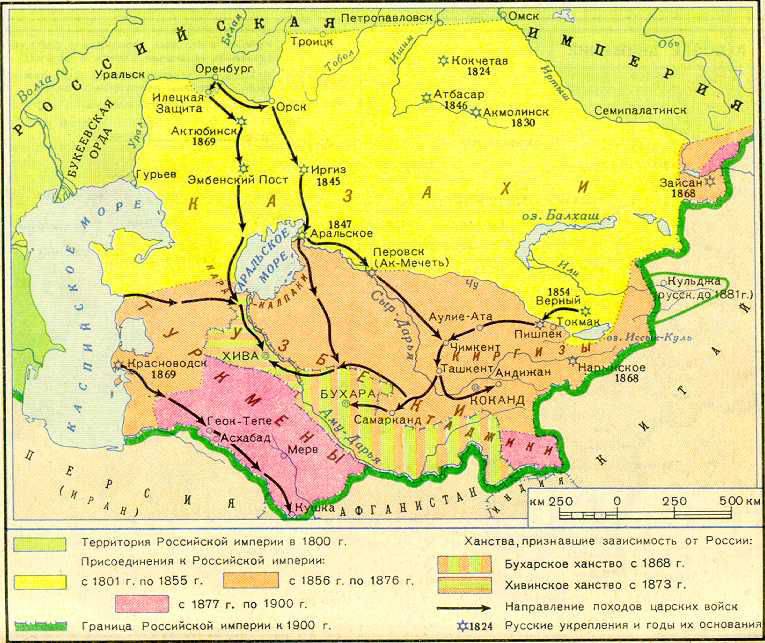
Military historian D.Ya. Fedorov wrote that “Russian dominion acquired tremendous charm in Central Asia, because it marked itself with a humane, peace-loving attitude towards the natives, and provoking sympathy among the masses became for them a desirable dominion.” There was a massive relocation of East Turkestan Muslims - Turkic-speaking Uygurs and Chinese-speaking Dungans - to the territory of modern Kazakhstan and Kyrgyzstan. Obviously, the Uyghur and Dungan leaders considered the Russian empire to be less dangerous for their ethnic identities than the state of Qing China. Naturally, the growing prestige of the Russian Empire among the feudal and spiritual leaders of the peoples of Central Asia could not help but worry the British, who by means of bribing and psychological treatment gained supporters among some of the disgruntled representatives of the local nobility, who were then supposed to be used against the Russian Empire as “ alternative ”center of gravity of the masses.
Joining Eastern Turkmen
The southwestern part of Central Asia was occupied by the warlike nomadic tribes of the Turkmen - ersari, Teke, Yomuds, Goklen, Saryk and Salyr. During the Russian-Persian War 1804-1813 Russia managed to conclude an alliance with the leaders of a number of Turkmen tribes against Persia. Thus began the establishment of Russian influence in Turkmenistan, although it was even more difficult than in other regions of Central Asia. Turkmen did not actually know the statehood and did not submit to any of the regional states, but they regularly made raids on settled neighbors with the aim of plundering and stealing slavery of the rural and urban population. For this reason, Persia, the Khiva Khanate, and the Bukhara Emirate were in hostile relations with the militant Turkmen tribes, but were unable to subdue them or even force them to abandon the practice of raids on their territories. It was Turkmen who for a long time remained the main slave traders of Central Asia and the source of new slaves, as they made periodic attacks on Iranian lands and on the settled population of the Bukhara Emirate and the Khiva khanate. Therefore, the question of protecting the southern borders of Russia in the light of the neighborhood with the warlike Turkmen was very serious. After the Emirate of Bukhara and the Khiva Khanate became the protectorates of the Russian Empire, and the Kokand Khanate ceased to exist and its lands became part of the Orenburg Governorate-General, Turkmenistan was the only unconquered region in Central Asia. Accordingly, it was of obvious interest to the Russian Empire in the context of the further expansion of its political influence in the region. Moreover, Turkmenistan was also of strategic importance for Russia, being on the shores of the Caspian Sea and adjacent to Iran and Afghanistan. The conquest of control over the Turkmen territories actually turned the Caspian Sea into the “inner sea” of the Russian Empire, only the southern coast of the Caspian remained under the control of Iran. War Minister DA Milyutin noted that without the occupation of Turkmenistan "The Caucasus and Turkestan will always be separated, because the gap between them is already now a theater of English intrigues, in the future it can give English influence to the shores of the Caspian Sea."
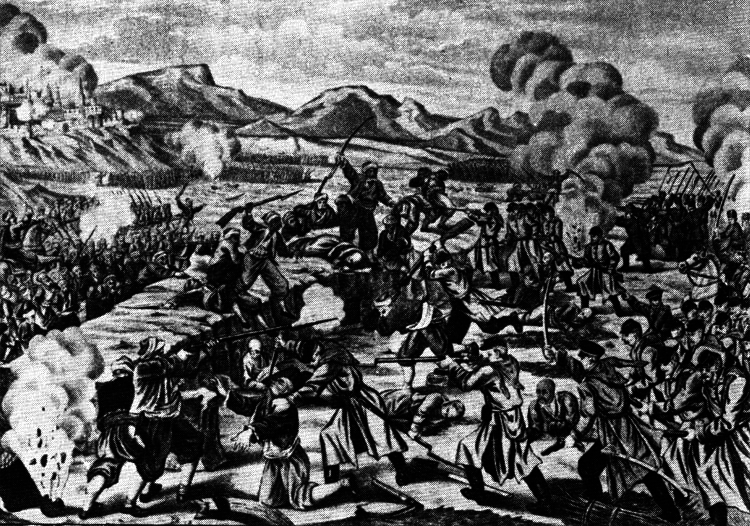
The city of Krasnovodsk was founded in 1869, from which Russia began its active penetration into Turkmen lands. The Russian government managed to reach an agreement quickly enough with the leaders of the West Turkmen tribes, but the eastern Turkmen did not intend to recognize the Russian authorities. They were distinguished by increased freedom-loving and belligerentness, and, moreover, they understood very well that the subordination of the Russian Empire would deprive them of their usual and well-established trades - raids on neighboring territories in order to capture people captive and then sell them into slavery. Therefore, Eastern Turkmen refused to submit to the Russian Empire and embarked on the path of armed struggle. The resistance of the eastern Turkmen continued until 1881. To pacify the Tekians, the most militant of all Turkmen tribes, numbering 40-50 thousand people and residing in the Akhal-Teke oasis area, the famous Akhal-Tekinskaya expedition was undertaken by the Russian military command. About 7 of thousands of Russian soldiers and officers under the command of General Mikhail Skobelev took part in it. Despite the most difficult climatic and geographical conditions of desert Turkmenistan and great human losses (1502 man killed and wounded), Russian troops 12 January 1881 were up to twenty-five thousand Tekintsy. As a result of the assault, the Turkmen lost 18 000 people killed and wounded. The control of the Russian Empire over the Ahal-Teke oasis, and in speed and over the entire Eastern Turkmenistan, was established. However, the territory of residence of the East-Turkmen tribes remained very weakly controlled, and so far was part of the Russian Empire, and after becoming part of the Soviet state. Turkmen tribes lived in accordance with their national traditions and were not going to retreat from them.
Fight on Kushka
As the Turkmen lands were conquered, Russian troops moved further south. Now the task of the Russian Empire was to conquer the Merv oasis, which, after the conquest of Akhal-Teke, became the last hotbed of instability in the region. General Alexander Komarov, the former head of the Transcaspian region, which included the Turkmen lands, sent representatives to the Merv, Russian service officers Alikhanov and Makhtum Kuli Khan, who managed to persuade the Merv leaders to accept Russian citizenship. 25 January 1884. Merv became part of the Russian Empire. However, this event was extremely agitated by the British, who claimed control over the territory of neighboring Afghanistan. In fact, having conquered the Merv oasis, Russia reached the borders of the British Empire, since Afghanistan, with which the Merv region directly bordered, was under British protectorate in those years. There was a need to define clear boundaries between the Russian Empire and Afghanistan, and Russia insisted on the inclusion of the Pandzhshekh oasis. The main argument of St. Petersburg was the population of these territories by Turkmen tribes, who were related to Russian Turkmen. But the British Empire sought to prevent the further advance of Russia to the south, acting through the Afghan emir. Afghan troops arrived at the Panjshekh Oasis, which caused a sharply negative reaction from the Russian commander, General Komarov. 13 March 1885 Mr. Komarov promised the Afghan side that Russia would not attack the Panjsheh if the Afghans withdraw their troops. However, the emir was not in a hurry with the withdrawal of troops. The Russian units concentrated on the east bank of the Kushka River, and the Afghan ones - on the west. 18 March 1885 (March 30 new style) Russian troops launched an attack on the Afghan positions. Komarov ordered the Cossacks to attack, but not to open fire first. As a result, the Afghans were the first to fire, after which the swift attack of the Russian troops forced the Afghan cavalry to flee. The pedestrian units of the Afghan troops were braver, but by the next morning they were also defeated and thrown back. In the clash that took place, Russian troops lost 40 people killed and wounded, while the losses of the Afghan side were 600 people. It is noteworthy that the actual command of the Afghan troops was carried out by British military advisers. The defeat inflicted on the Afghan troops by the Russian army greatly undermined the authority of the British Empire and its military specialists in the eyes of the Afghan emir and his confidants, since the latter relied on British specialists and were very disappointed.
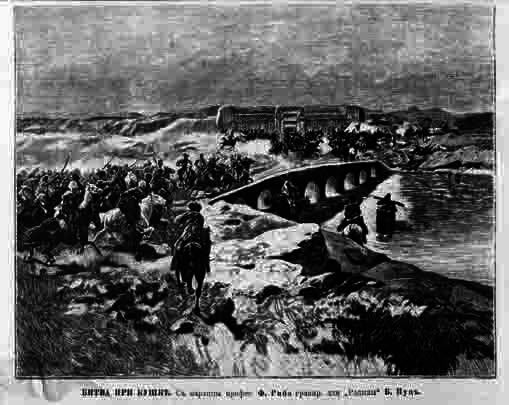
The battle of Kushka was the culmination of the Anglo-Russian confrontation in Central Asia. In fact, the Russian and British empires were on the brink of war. At the same time, the Afghan emir, realizing that in the event of a large-scale confrontation between the two powers, the worst thing would be Afghanistan, on whose territory this confrontation would unfold, made efforts to smooth the conflict, trying to pass it off as a minor border incident. Nevertheless, the British "war party" argued that any advance of Russia to Afghan territory sooner or later would endanger not only the integrity of Afghanistan, but also British rule in India. The British authorities demanded that Russia immediately return the village of Pendzhde and its surroundings to Afghanistan, for which they received a categorical refusal. Russia motivated its right to possession of the occupied territory by the fact that it is inhabited by Turkmen, who are ethnically close not to the Afghans, but to the Turkic population of Russian Turkestan.
The British began preparations for probable hostilities. Ships of the royal fleet were put on high alert so that, in the event of a war, immediately attack Russian ships. In the event of hostilities, the British fleet in the Pacific Ocean was ordered to occupy Port Hamilton in Korea and use it as the main military base against Russian troops in the Far East. Finally, the option of an attack on the Caucasus from the Ottoman side was also considered. The Persian Shah also turned to Great Britain for help. The fact is that the Merv oasis, which was actually controlled by the Turkmens, formally belonged to Persia. Before the Russian troops occupied Merv, Turkmen nomads incessantly raided Persian territory, captured the Persians, since the latter were Shiites and there were no contradictions to religious canons in their captivity, and sold them on slave markets in Bukhara. In the Bukhara emirate, a special ethnic group “ironi” has even formed, which exists in Uzbekistan to this day - these are descendants of the Iranians who were stolen by the Turkmens and sold to Bukhara. However, for the time being, the Persian Shah was not very worried about the situation and he did not recall the formal affiliation of Merv to Persia, nor did the Persian citizenship of the peasants and artisans, who were captured and enslaved by the Turkmen nomads. But the Russian southward movement greatly worried the Persian elite, who saw this as a danger of losing their own power in the event of Russian occupation of Persia. The Shah of Persia urged Great Britain to intervene in the situation and capture the Afghan Herat in order to prevent further Russian expansion and maintain the previous alignment of forces in the Central Asian region.
However, neither the Russians nor the British decided to open armed confrontation. As noted above, I calmly took it. news about the defeat of their troops in the Panjshehe Afghan emir. Contrary to the expectations of the British side, who feared that the emir would go to war with Russia and demand military aid from the British, the Afghan ruler showed great restraint. In the end, Russian and British diplomats managed to agree. Without the participation of the Afghan side, the state border between the Russian Empire and Afghanistan, which ran along the Kushka River, was defined. At the same time, the village of Pendzhde, later called Kushka, became the southernmost settlement of the Russian Empire.
But the official fixing of the borders between Russia and Afghanistan did not at all mean a weakening of the interest of the British towards the Central Asian region. Even after Central Asia became part of Russia and successfully developed in the orbit of Russian statehood, the British undertook numerous schemes against the Russian presence in the region. The growth of anti-Russian nationalist attitudes among the Turkic population of Central Asia was largely provoked by the UK, which supported any anti-Russian forces. After the revolution and the beginning of the Civil War, the British provided full support to the so-called "basmachs" - armed groups of Uzbek, Turkmen, Tajik, Kyrgyz feudal lords who opposed the establishment of Soviet power in Central Asia. After World War II and the declaration of independence of India and Pakistan, the role of the main anti-Russian factor in the region gradually shifted from Great Britain to the United States of America. Almost a century after the events described in the article, the Soviet Union still got involved in the military-political confrontation on the territory of Afghanistan. For a decade, the Soviet army participated in the Afghan war, losing thousands of soldiers and officers killed and wounded. During the collapse of the USSR in 1991, the round of violence came to the lands of the former Russian and Soviet Central Asia - the civil war in Tajikistan, the events on the Kyrgyz-Uzbek border, political instability in Kyrgyzstan. The geopolitical confrontation between Russia and the West in the Central Asian region continues, and in modern conditions it will have only an obvious tendency towards complication.
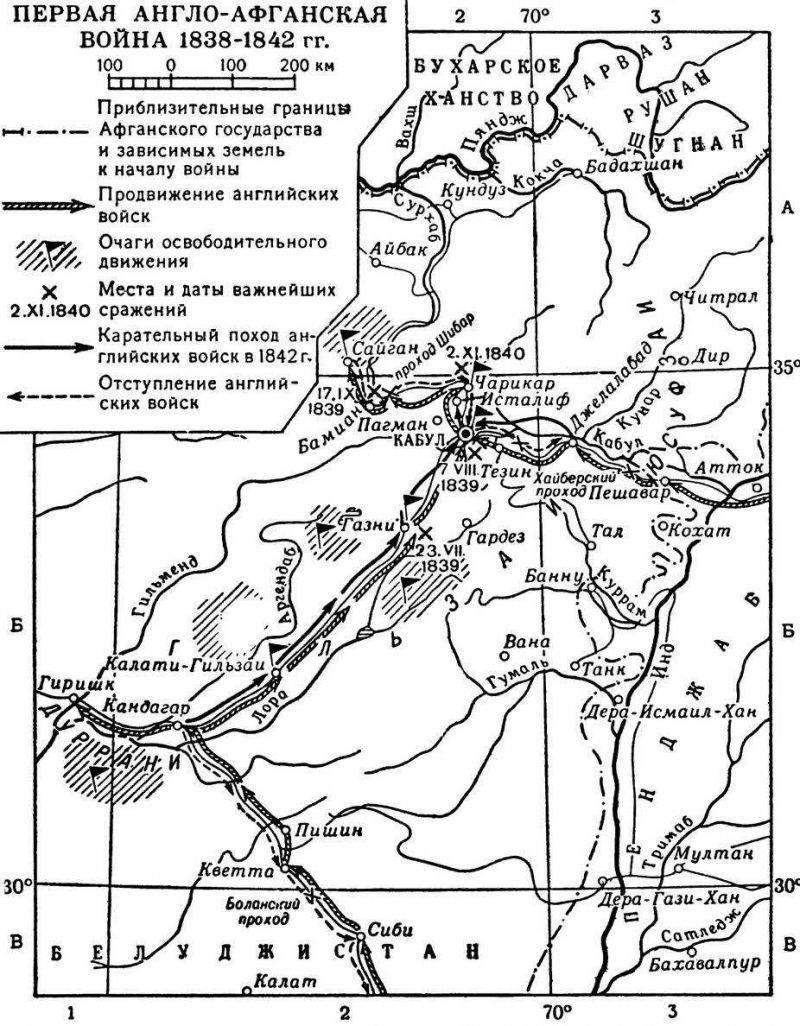
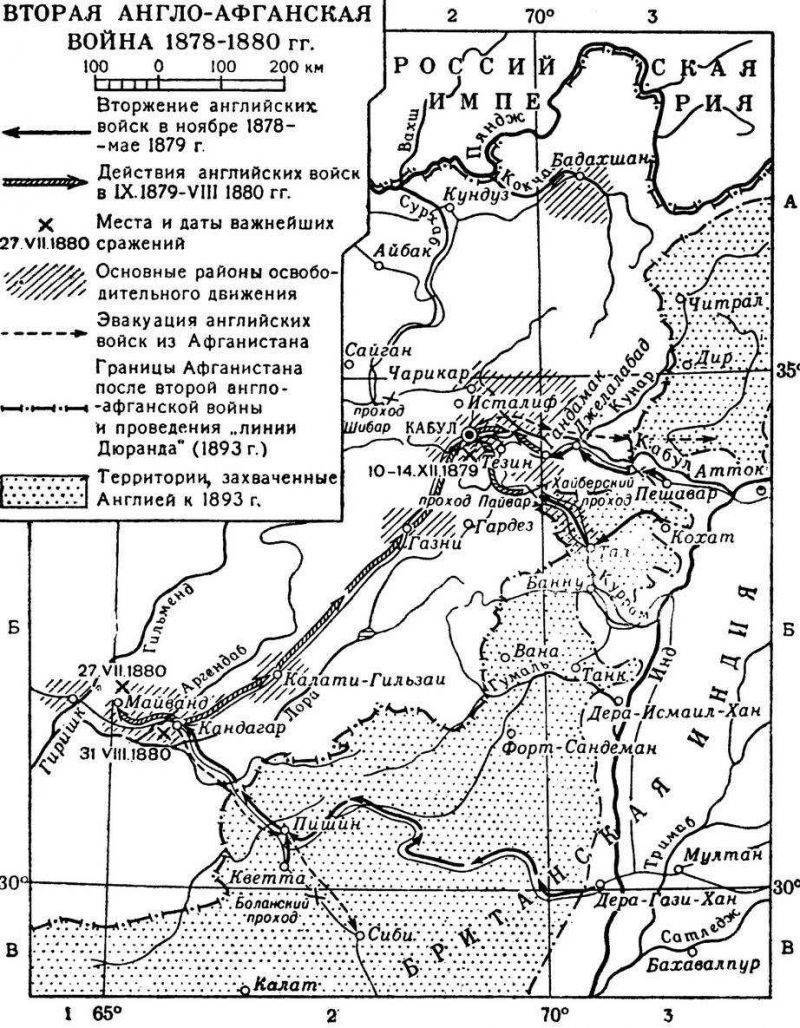
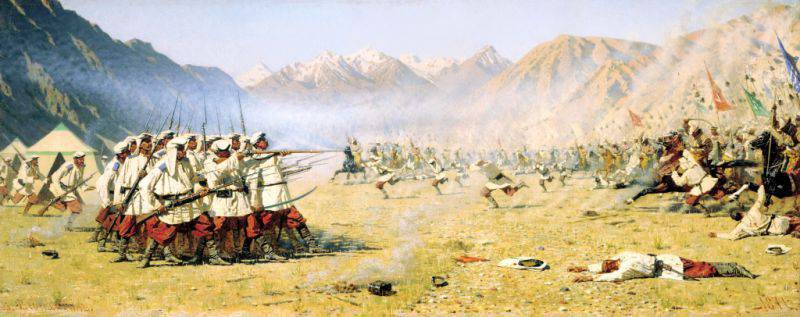
Information